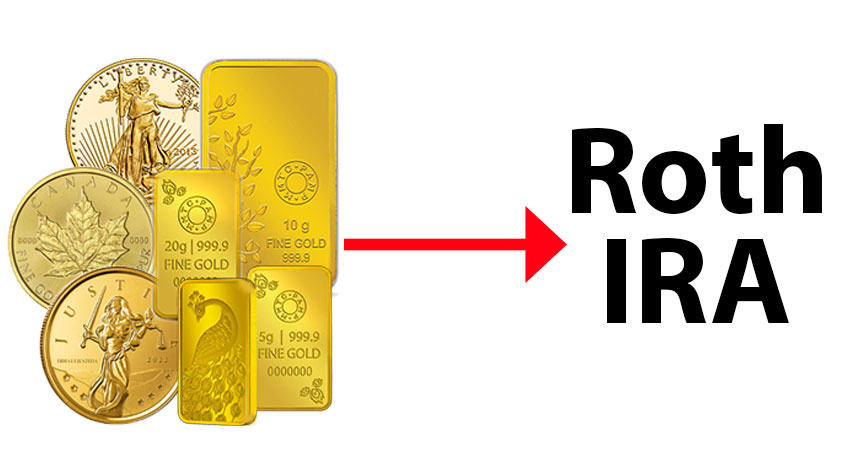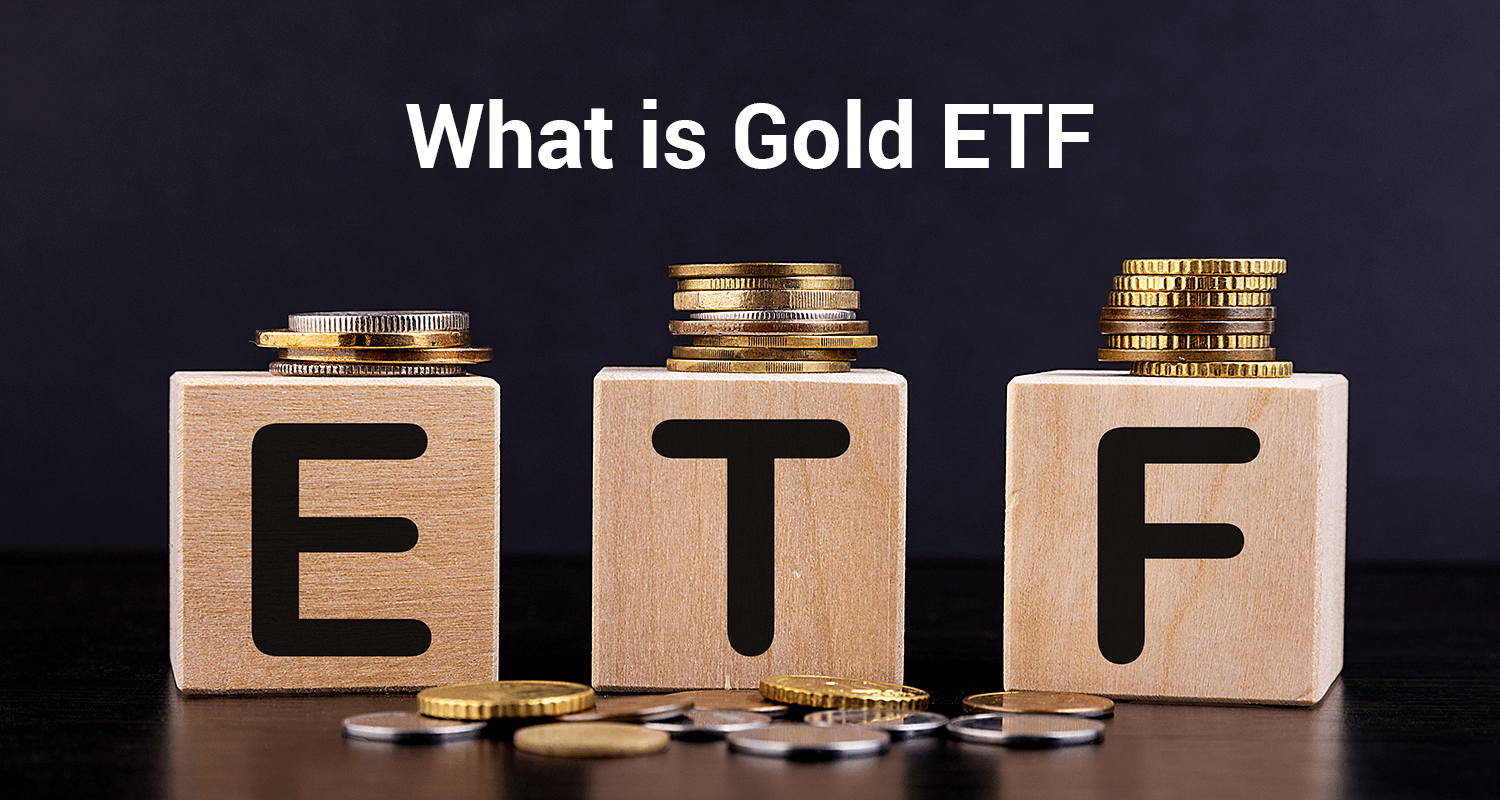How To Sell Gold Etf In Roth Ira

Navigating the complexities of retirement investing can be daunting, especially when dealing with specialized assets like Gold Exchange Traded Funds (ETFs) held within a Roth IRA. Missteps can lead to unintended tax consequences and penalties, making a clear understanding of the process crucial. The seemingly simple act of selling a gold ETF can quickly become a procedural maze without proper planning and execution.
This article provides a comprehensive guide on how to sell a Gold ETF within a Roth IRA, covering essential considerations, step-by-step instructions, and potential pitfalls to avoid. It aims to equip investors with the knowledge needed to make informed decisions and manage their retirement savings effectively. We will delve into the intricacies of Roth IRA rules, brokerage account procedures, and tax implications to ensure a smooth and compliant transaction.
Understanding the Roth IRA Landscape
A Roth IRA is a retirement savings account that offers tax-advantaged growth and withdrawals. Contributions are made with after-tax dollars, but qualified withdrawals in retirement are tax-free. This makes it an attractive option for individuals who anticipate being in a higher tax bracket in retirement.
The beauty of a Roth IRA lies in its tax-free growth potential. Investments within the account, including Gold ETFs, can appreciate without incurring taxes on dividends or capital gains. This feature is particularly beneficial for assets expected to perform well over the long term.
However, strict rules govern contributions, withdrawals, and investment activities within a Roth IRA. Understanding these rules is paramount to avoid penalties and maintain the account's tax-advantaged status. Selling a Gold ETF is no exception; it must be done carefully within the IRA framework.
Selling Your Gold ETF: A Step-by-Step Guide
The process of selling a Gold ETF within a Roth IRA is relatively straightforward, but requires attention to detail. Here's a step-by-step guide:
1. Access Your Brokerage Account
The first step involves logging into your online brokerage account where your Roth IRA is held. This could be with a major brokerage firm like Fidelity, Schwab, or Vanguard, or a smaller, specialized platform.
Ensure you have your login credentials readily available. If you've forgotten your password, utilize the platform's password recovery options.
Once logged in, navigate to your Roth IRA account.
2. Locate Your Gold ETF
Within your Roth IRA account, locate the Gold ETF you wish to sell. Most brokerage platforms provide a clear overview of your holdings.
The ETF will typically be listed with its ticker symbol (e.g., GLD for SPDR Gold Trust). Confirm you've selected the correct asset.
Verify the number of shares you own and the current market price. This information is crucial for placing your sell order accurately.
3. Place Your Sell Order
Once you've located the Gold ETF, initiate the sell order. Look for a "Sell" or "Trade" button associated with the ETF.
You'll typically be presented with different order types. The most common are Market Orders and Limit Orders. A market order executes immediately at the current market price. A limit order allows you to specify a minimum price at which you're willing to sell.
Enter the number of shares you want to sell. Review the order details carefully before submitting. Double-check the quantity, ticker symbol, and order type.
4. Confirm and Execute the Trade
After reviewing your order, confirm the transaction. Most platforms require a final confirmation before executing the trade.
Once confirmed, the order will be sent to the market for execution. The speed of execution depends on market conditions and the order type you selected.
After the order is executed, you'll receive a confirmation notification. The proceeds from the sale will be deposited into the cash balance within your Roth IRA.
5. Review Your Account Statement
Regularly review your account statement to ensure the transaction was processed correctly. Check the sale price, the number of shares sold, and the resulting cash balance.
If you notice any discrepancies, contact your brokerage firm immediately. Promptly addressing any issues can prevent potential complications.
Your account statement serves as a record of your transactions and helps you track your investment performance over time.
Important Considerations and Potential Pitfalls
While the process of selling a Gold ETF is straightforward, several important considerations and potential pitfalls must be kept in mind.
Market Volatility: Gold prices can be volatile, particularly in response to economic news and geopolitical events. Be aware of current market conditions before placing your sell order.
Transaction Fees: Brokerage firms may charge transaction fees for selling ETFs. Factor these fees into your overall investment strategy.
Settlement Time: It typically takes one to two business days for the proceeds from the sale to settle in your account. Keep this settlement time in mind when planning subsequent investments.
Wash Sale Rule: While not directly applicable within a Roth IRA, understanding the wash sale rule is beneficial for overall tax planning. It prevents investors from claiming a loss on a sale if they repurchase the same or substantially identical security within 30 days.
Beyond the Sale: Reinvesting Within Your Roth IRA
The proceeds from the sale of your Gold ETF remain within your Roth IRA and are available for reinvestment. This is a key advantage of selling within the IRA structure.
Consider your investment objectives and risk tolerance when deciding how to reinvest the funds. Diversifying your portfolio can help mitigate risk.
Consult with a financial advisor to develop a comprehensive investment strategy that aligns with your retirement goals.
The Future of Gold ETFs in Retirement Planning
Gold ETFs remain a popular option for investors seeking to diversify their portfolios and hedge against inflation. However, their role in retirement planning should be carefully considered.
As the market evolves, new and innovative investment products may emerge. Staying informed and adapting your investment strategy is crucial for long-term success.
Ultimately, the decision to invest in or sell a Gold ETF within a Roth IRA depends on individual circumstances and investment objectives. Careful planning and a thorough understanding of the rules are essential.

![How To Sell Gold Etf In Roth Ira Gold ETF in IRA [2023 Inflation Hedge?] - Andrew C McGuire](https://andrewcmcguire.com/wp-content/uploads/How-to-Invest-in-Gold-ETFs-Through-an-IRA-1.png)
















